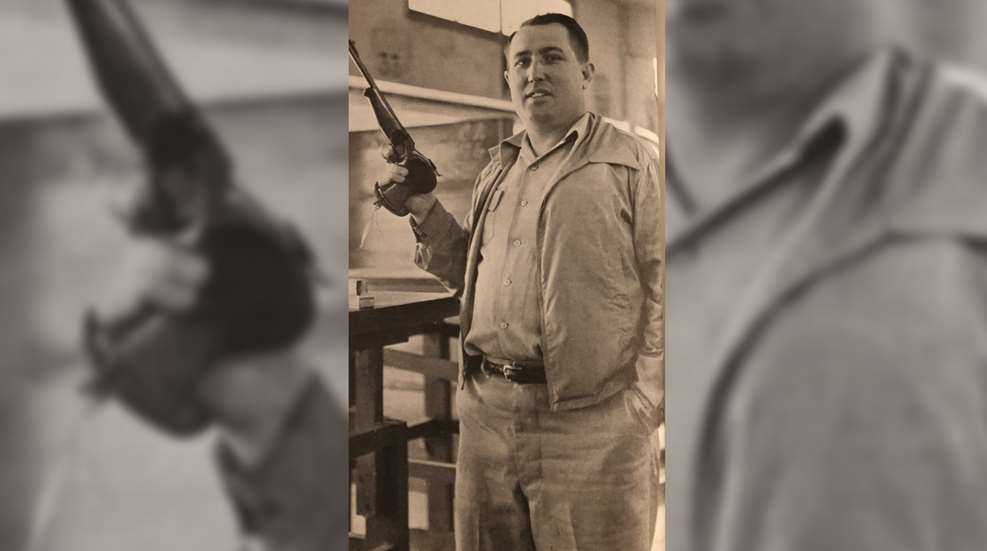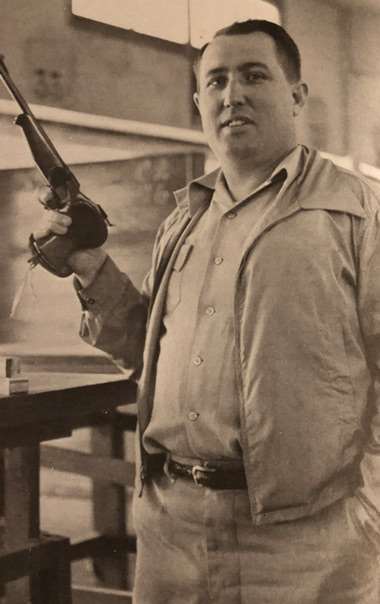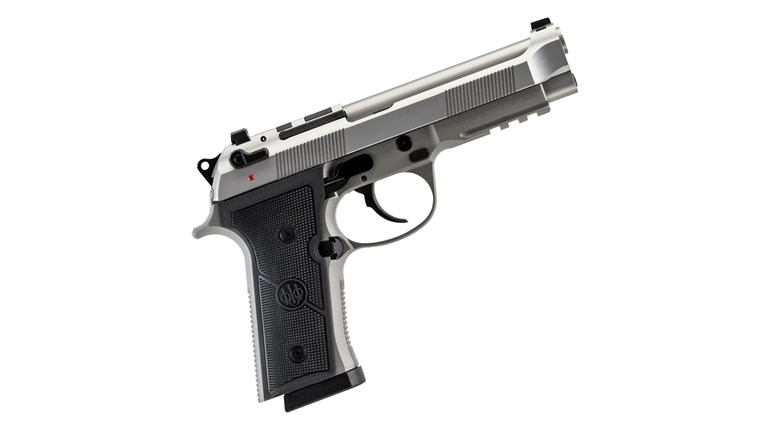
The below is an excerpt from the 1978 book, Olympic Shooting, written by Col. Jim Crossman and published by the NRA.
The Free Pistol Event
By Colonel Jim Crossman
The two Olympic pistol events are about as far apart in technique as one can imagine. While the rapid-fire match calls for good accuracy, it puts a premium on speed, shooting five shots in four seconds in one stage. The free pistol match, on the other hand, is a slow, drawn-out affair with the emphasis on precision and accuracy.
The free pistol match has not really changed in 60 years except in a few minor details. Under the present rules (1978), it consists of a maximum of 15 sighting shots, taken before or between 10-shot record targets and 60 record shots. The allowed is 2.5 hours, an average of two minutes per shot. The pace is leisurely, and one often sees a shooter during the match sitting down and reading a book to get his or her mind off shooting problems.
And problems he does have. The 10-ring is less than two inches across (50 mm or 1.9685 inches) and that is small at 50 meters (55 yards). Other ring sizes go up by 50 mm increases in diameter, making the 9-ring 3.9 inches in diameter and the 8-ring 5.9 inches, for example. By comparison, the U.S. target used for slow-fire at 50-yards range has a 10-ring of 3.4 inches diameter, a 9-ring more than 5.5 inches in diameter, and other rings correspondingly larger. That the international course of fire is difficult is shown by the scores. An Olympic record of 572x600 was set in 1976.
The shooter will find that the free pistol is not very free when he tries to buy one. It is a highly specialized piece of equipment, with fine sights, excellent accuracy, form-fitting stock and set-trigger. Although commercial U.S. .22 autoloaders have been used in this match, the free pistol in the hands of a good, experienced shot is considerably superior. The free pistol gets its name from the fact that it is almost free of restrictions. The pistol must be .22 caliber, it must shoot a lead bullet and it must be without optical sights, but almost anything else goes. There is not and there never has been a good American free pistol, so the people who are serious about this game use foreign guns. The three winners at Tokyo 1964 all used the popular Hammerli free pistol.
At one time the people of the U.S. Army Marksmanship Unit worked with High Standard Manufacturing Company to make an electrically fired pistol for this match.
Electric firing is by no means new, having been tried around the turn of the 20th century in one form or another. While some of the earlier guns had electric primers, the experimental Army-High Standard free pistol really had only a solenoid-operated sear. The trigger made and electric connection, which activated the solenoid and released the sear. It was only moderately successful, and little has been heard of it lately. However, in 1964 Captain Frank Green won a silver medal using an electric sear of his design on a Hammerli pistol.
The free pistol event is slow moving, demanding great concentration and high accuracy from the competitors. Each shot is a major production. The shooter may aim and prepare to fire several times before he lets a shot go. This is no place for the happy-go-lucky, let'-do-it-now shooter. The usual match over the U.S. course of fire includes a majority of shots in timed-fire and rapid-fire, while the international event is slow-fire only.
The U.S. slow-fire shooter who has a good knowledge of sight alignment, position, trigger squeeze and the other aspects of pistol shooting should be able to convert to the international style, but it probably will not be easy. The smaller target demands greater care on his part, and he has to work longer on each shot. It is going to take him a while, however, to get used to the more leisurely pace and to make it all count for better scores.

One problem will be getting used to that new gun. Good scores require the free pistol. It is a superbly accurate single-shot pistol with a long barrel, long sight radius and precisely adjusted sights, an elaborate grip tailored to the hand and a finely adjustable set trigger. The free pistol is such a specialized item that only a few shooting supply houses handle them. It is not cheap. The latest Hammerli free pistol costs around $800 in this country (1978 prices). The free pistol shooter does not need a lot of additional gear, however. He should have a scope for spotting his shots at 50 meters, a box for carrying his pistol that also doubles as a scope stand, and a case for his sight-blackening equipment, his ammunition and other gadgets. He should have a comfortable portable chair for those long waiting periods between shots when he is trying to settle his nerves.
It takes time to become accustomed to handling the free pistol. Instead of firmly gripping the free pistol, as with other guns, the shooter in effect puts it on. The stock fits the hand very snugly, with supports and contorls for each finger. Each finger is carefully located so that it takes only one position and contributes its share to supporting the gun.
The angle of the free-pistol grip usually is unusual and if the shooter holds it with his wrist in the customary position, the muzzle will be much too high. So, the hand must be rotated on the wrist to point down at more of an angle. It does not feel right at first—another one of the things about the free pistol game that takes experience to get used to. When the hand is in correct position on the grip, the gun practically holds itself. The light, relaxed feeling of a proper grip is necessary if the shooter is to get the most out of his or her set trigger. Where the U.S. rules call for trigger pull weights of pounds, the free pistol shooter talks about ounces of pull. Each shooter has to determine for themselves the trigger weight with which they perform best, but it should be heavy enough—a few ounces—that he or she can feel the trigger and thus keep some control on it.
The trigger, instead of being the conventional finger-shaped metal piece, is usually merely a small button, which adds to the shooter's ability to feel and control the let-off.
Although the basic principles of shooting slow-fire pistol are much the same for the U.S. style and the Olympic style, most experienced shooters figure it takes several months of intensive dry firing and shooting to gain control of the free pistol. If a shooter goes for this game, he or she must be prepared to work at it.
Read more: Early History Of The Smallbore Rifle Prone Match



































